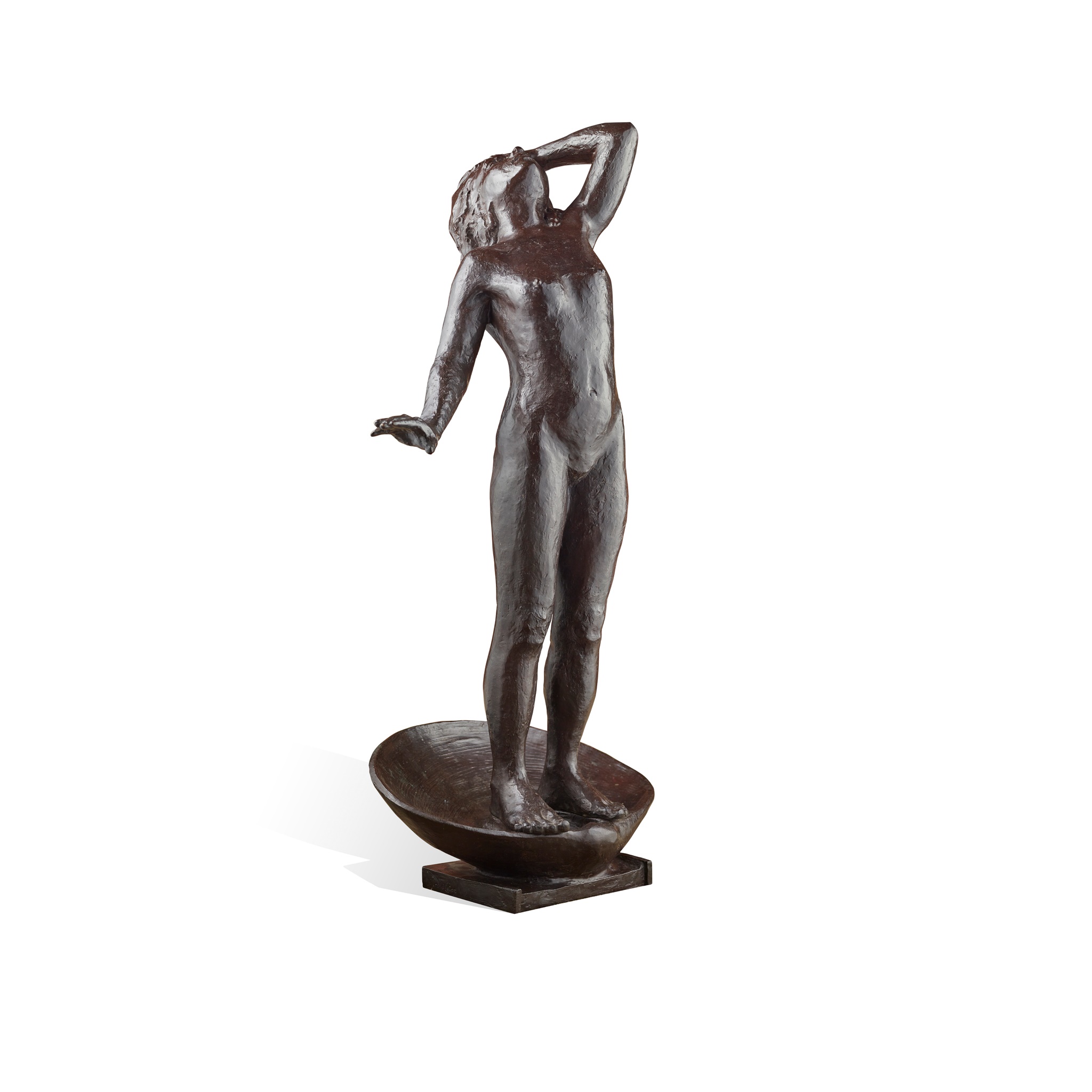GERALD LAING (BRITISH 1936-2011) §
FOUNTAIN - GIRL ON CLAMSHELL, WET HAIR, 1987
£25,000
Scottish Paintings & Sculpture
Auction: Evening Sale: 09 December 2021 | From 18:00
Description
1/10, bronze
Dimensions
127cm x 66cm x 46cm (50in x 26in x 18in)
Provenance
Provenance: Purchased directly from the artist
Exhibited: Gerald Laing: Sculpture at Chisenbury Priory, Chisenbury Priory, 2002
Literature: Gerald Laing: Sculpture at Chisenbury Priory exhibition catalogue, 2002, p.3 (titled Woman with Wet Hair)
Footnote
Note: Artist's catalogue raisonne no. 476. This work is the one illustrated in the catalogue raisonne. It was conceived in Laing's New York studio in 1987.
The 20th century produced a number of significant British sculptors. A common course charted across many of these careers was the departure from or outright rejection of the traditional. In many cases the figure, if it remained discernible at all, was typically heavily abstracted. Broadly speaking, the classical tradition became an increasingly inactive reference point, unless that point was to consciously subvert it. What makes Gerald Laing so fascinating is the fact that he chose to gravitate back towards sculpture’s formal roots, completely against the grain of his peers and indeed the general trajectory of Modern art.
Originally heavily involved at ground zero of the UK and America’s Pop Art scene, Laing made an extraordinary pivot away from the radically minimalist and abstracted forms of his early career and, from the 1970s onwards, saw out his remaining decades as a master figurative sculptor in the classical manner.
It is recorded that he underwent this transformation at the end of the 1960s. Apparently disillusioned with the art scene, he returned to Britain from the States in 1969 and headed northwards, acquiring the ruins of the medieval Kinkell Castle in the Black Isle, Scotland. Over the course of three years he meticulously restored the castle using local craftsmen and traditional techniques. By the end of the 1970s he had a large-scale foundry in full operation on the estate. As well as the life-changing undertaking that was the restoration of Kinkell, Laing spoke of his “epiphany” in 1973 while looking at Charles Sargeant Jagger's great First World War Artillery Memorial at Hyde Park Corner: “As a result of this experience I changed my entire method of working”. He had found his new visual language.
This move away from the hegemony and narrow definitions of ‘the avant-garde’, a radical action in itself, had been a huge risk. Gradually, however, his career went from strength to strength and the commissions - public and private - rolled in, with no project seemingly too ambitious in scale or design.
In 1987, the work offered here was conceived and sculpted in clay from life in New York, and later that same year it was cast in bronze at Kinkell. An edition of only 10, the piece is conceived as a garden statue and water fountain. The model was a professional dancer, and her elegant figure, redolent in style of the French 19th century greats like Maillol and Rodin, throws her head gently backwards while a stream of water pours through her hair. Though visually it seems to possess the domestic intimacy of a Degas bather, she is standing not in a basin but a clam shell like a Renaissance goddess. Laing’s work is full of these pleasing art historical reference points, evidencing a scholarly understanding and appreciation of the evolution of figurative sculpture.

